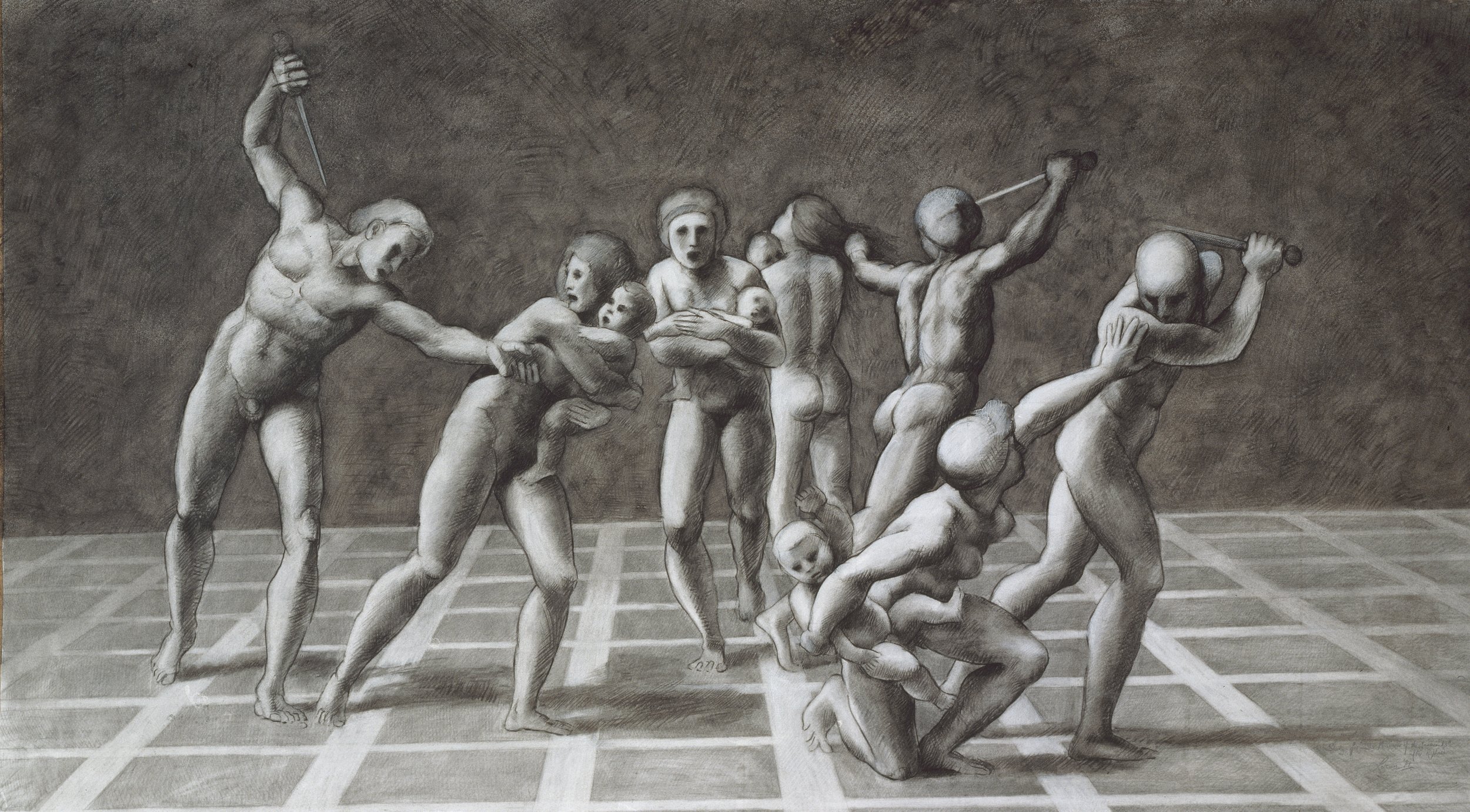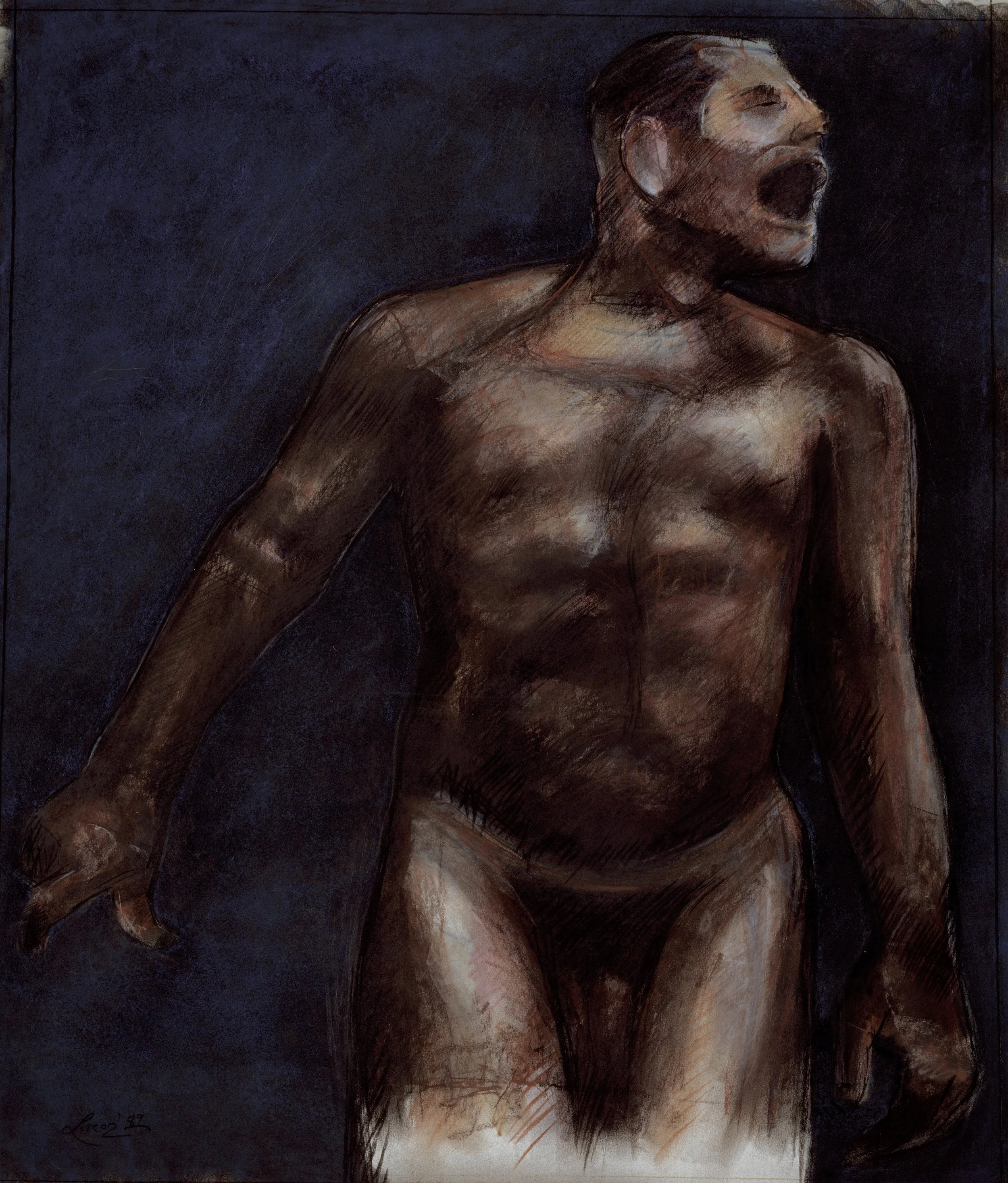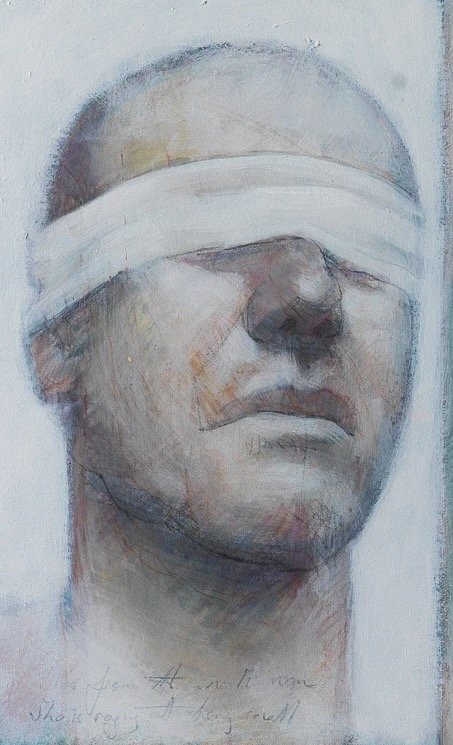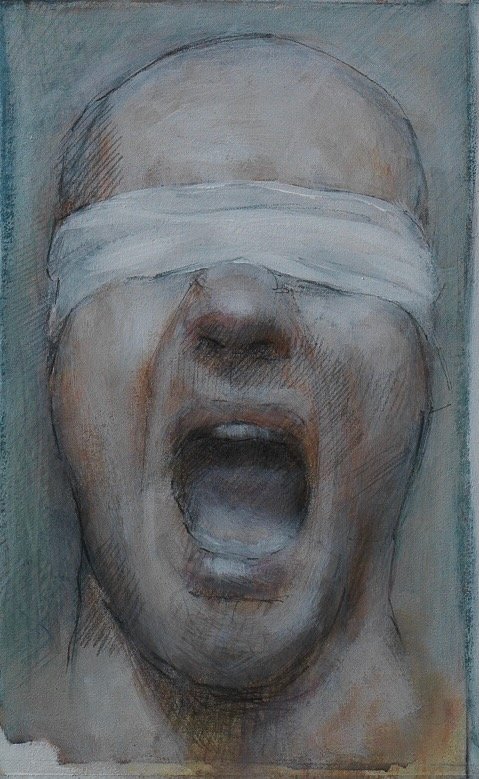Enola Gay 91x93cm Charcoal, Pastel, Conte on Paper Private collection U.K.
October 27th, 1962, is known as “Black Saturday” and was the closest humanity has yet come to nuclear catastrophe. I was a child then, and during that week in school, our teachers had us pray that the world wouldn’t end. At home, I picked up on my parents’ anxiety about the Cuban Missile Crisis, and I became aware of the fragility of human existence. With the current political extremes, the spectre of nuclear annihilation is again evident.
During the “arms race” of the 1980s, I began a series on nuclear war. This piece is titled Enola Gay, which was the name of the plane that dropped the bomb on Hiroshima. Enola Gay was named after the pilot’s mother – a beautiful name for a terrible event.
Opus Dei tryptych 145x533 cm Charcoal, Conte, Gold, and Silver leaf on Paper
Collection: Irish Museum of Modern Art : IMMA
I made this piece after the Warrington bombing in 1993, where two children were killed by an IRA bomb. This was not intended as a political piece; instead, I wished to address the “shadow” in the human condition where people are so detached from their own humanity that they can callously murder and maim. The piece was exhibited in Warrington Museum and also in Denmark, the Czech Republic, and Ireland.
For the triptych, I used images that already existed rather than creating new imagery. The piece reads from left to right. Right side: The angel from DaVinci’s Annunciation, Masaccio’s Expulsion from the Garden, Tomoko and Mother in the Bath from W. Eugene Smith's photographs of mercury poisoning in Japan. Centre: Father and son from the Semana Santa festival in Cordoba, Spain. Left: Raphael’s Massacre of the Innocents
Paradise Lost
Christian Soldiers
Massacre of the Innocents, after Raphael.
The Prophet 82x66cm pastel, conte, charcoal on paper
Until its closure in 1995, Leros in Greece was home to one of the largest psychiatric hospitals in Europe. In the 1980s, a team of journalists and psychiatrists revealed the inhuman conditions under which the patients lived. A UK broadsheet, The Observer, published disturbing photographs of the asylum. In one photographs, a naked man stood screaming – there was something so universal in his agony that I wanted to capture and explore. Often the lunatic is also the prophet.
A Brief History of Incomprehension 66x94 cm, watercolour pencils and gesso on Fabiano paper
In the 20th century, the human experience seemed inherently absurd to the existential philosophers who assimilated the realities of the Holocaust and the Atomic Bomb. Modern man could no longer apply meaning to human existence in the way mythology and religion once did. Meaning became redundant from the moment that humanity’s default response to its shadow self was one of mutual assured destruction.
A Brief History of Incomprehension detail
The Shadow is a moral problem that challenges the whole ego-personality, for no one can become conscious of the shadow without considerable moral effort. To become conscious of it involves recognizing the dark aspects of the personality as present and real. This act is the essential condition for any kind of self-knowledge, and it, therefore, as a rule, meets with considerable resistance. Indeed, self-knowledge as a psychotherapeutic measure frequently requires much painstaking work extending over a long period of time.” ~ Carl Jung
A Brief History of Incomprehension detail
“One does not become enlightened by imagining figures of light, but by making the darkness conscious.” ~ Carl Jung
A Brief History of Incomprehension detail
Normality is a fine ideal for those who have no imagination ~ Carl Jung









